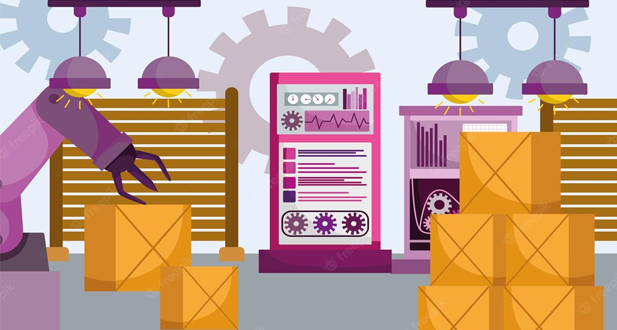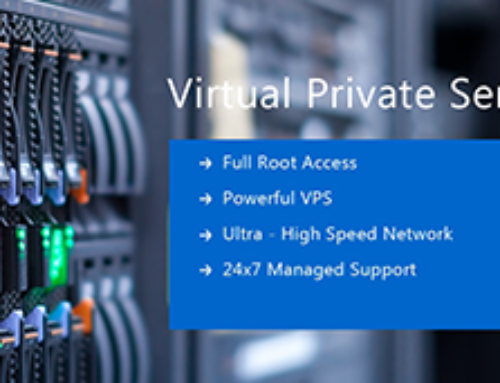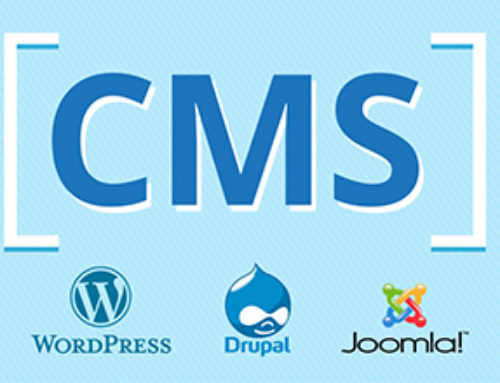Cloud computing is a broad term that refers to any activity that requires hosting services online. These services are divided into the three main categories of cloud computing: software as a service, platform as a service, and infrastructure as a service (IaaS) (SaaS).
Both private and public clouds are possible. Anybody with internet access can purchase services from a public cloud. In order to provide hosted services to a small group of users with specific access and permissions settings, a private cloud is a proprietary network or data center. Regardless of whether a cloud is private or public, access to computing resources and IT services should be easy and scalable.
Cloud infrastructure consists of the hardware and software components required for a cloud computing architecture to be used effectively. Alternatively known as utility or on-demand computing, cloud computing is online storage. The cloud icon that frequently represents the Internet in flowcharts and diagrams is the source of inspiration for the term cloud computing.
KNOWING THE PRINCIPLES OF CLOUD COMPUTING
The idea of sharing computing resources, software, and data on demand over the internet is the foundation of cloud computing service models. Companies or individuals pay a fee to utilize a virtual pool of shared resources, including computing, storage, and networking capabilities, which are housed on distant servers owned and operated by service providers.
You just pay for what you use, which is one of the numerous benefits of cloud computing. Due to the lack of having to purchase and operate their own physical data centers and servers, enterprises are able to scale more quickly and effectively.
Cloud computing connects customers to a platform in the cloud where they may request and use rented computing services. This platform is typically the internet. To facilitate the sharing of data, a central server manages all client-server interactions. To keep this information safe and secure, security and privacy features are frequently used.
There is no one solution that works for any cloud computing architecture. Your and your company’s needs might be met by something other than what works for another business. In reality, the cloud’s flexibility and adaptability enable businesses to quickly adjust to shifting markets or measurements, which is one of its main selling points.
KINDS OF CLOUD COMPUTING SERVICES
Cloud computing can be divided into three general service delivery types or cloud computing forms:
IaaS (Infrastructure as a service) – IaaS providers like Amazon Web Services (AWS) provide a virtual server instance and storage, as well as application programming interfaces (APIs) that allow users to transfer workloads to a virtual machine (VM). Users are given a storage capacity and can start, stop, access, and customize the VM and storage as they see fit. IaaS providers provide small, medium, large, extra-large, and memory- or compute-optimized instances, as well as the ability to customize instances, to meet the needs of diverse workloads. The IaaS cloud model is the closest to a remote data center for commercial users.
PaaS (Platform as a service) – Cloud providers provide development tools for their infrastructures in the PaaS model. Users use APIs, web portals, and gateway software to gain access to these technologies via the internet. PaaS is commonly used for general software development, and many PaaS companies host the software after it has been produced. Popular PaaS platforms include Google App Engine, Salesforce’s Lightning Platform, and AWS Elastic Beanstalk.
SaaS (Software as a service) – SaaS is a software-as-a-service distribution paradigm that delivers software programs via the internet; these applications are sometimes referred to as web services. Using an internet-connected PC or mobile device, users can access SaaS apps and services from any location. Through the SaaS paradigm, users can access application software and databases. One popular SaaS software is Microsoft 365, which offers email and productivity tools.
CLOUD DEPLOYMENT MODELS
A company’s data center provides private cloud services to employees. An organization builds and maintains its private cloud infrastructure. This strategy combines cloud flexibility with local data center management, control, and security. IT chargeback may bill internal users for services. VMware and OpenStack are private cloud providers.
In the public cloud paradigm, a third-party CSP delivers cloud services over the internet. Many public cloud services provide long-term contracts, although most sell by the minute or hour. Customers pay just for CPU cycles, storage, and bandwidth. AWS, Azure, IBM, GCP, Oracle, and Tencent are top public CSPs.
A hybrid cloud orchestrates and automates public and private cloud services. The private cloud can manage mission-critical workloads and the public cloud can accommodate demand spikes. A hybrid cloud combines public cloud infrastructure with mission-critical data control to produce a unified, automated, scalable environment.
BENEFITS OF CLOUD COMPUTING
Since the beginning of time, cloud computing has grown in popularity. The cloud computing infrastructure of today exhibits a variety of traits that have significant benefits for companies of all sizes. Some of them are
- Provisioning using self-service – End users can set up compute resources on demand for almost any kind of workload. An end user can set up computing features like server time and network storage. This means that IT administrators no longer have to set up and manage computing resources.
- Flexibility – Companies can easily scale up or down depending on how much computing they need. This gets rid of the need to make big investments in local infrastructure that might or might not stay in use.
- Per-user pricing – Thanks to the accurate assessment of computational resources, users can only be charged for the workloads and resources they actually utilize.
- Resilience to workload – To ensure resilient storage and to maintain users’ critical workloads often across various geographic regions—CSPs frequently implement redundant resources.
- Flexibility in migration – Businesses can automatically or on-demand shift certain workloads to or from the cloud, or to multiple cloud platforms, to maximize cost savings or take advantage of new services as they become available.
- Extensive network access- A user can utilize any device with an internet connection to access or upload data to the cloud from anywhere.
- Pooling of resources and Multi-tenancy – The ability for multiple users to share the same physical infrastructures or the same applications while maintaining individual control over their data is the essence of multi-tenancy, which also enables the pooling of resources. Cloud service providers can serve several users with the same set of hardware by pooling their resources. Because of this, cloud providers’ resource pools need to be sizable and malleable enough to meet the needs of a wide variety of customers.
- Management of costs – Cloud infrastructure saves companies money on equipment purchases and maintenance. As a result, companies don’t have to invest in hardware, buildings, utilities, or massive data centers to support their growing enterprises.
- Cloud providers’ staff may manage cloud data center operations, so organizations don’t need massive IT teams. Cloud computing reduces downtime expenses. Cloud computing rarely has downtime, so firms don’t have to spend time and money fixing downtime concerns.
- Data, workload mobility – Users can access cloud-stored data from anywhere with an internet connection. Users don’t need USB drives, external hard drives, or CDs to access their data. Remote workers can stay in touch with coworkers and clients by accessing company data on their smartphones. Cloud users can easily process, save, retrieve, and restore resources. Cloud providers automatically upgrade and update, saving time.
- Business continuity/disaster recovery (BCDR) – All firms worry about data loss. Users may access their data even if their laptops or smartphones are broken by storing it in the cloud. Cloud-based services allow enterprises to quickly restore data from natural disasters or power outages. This enables BCDR to keep workloads and data available even if the business is damaged.
DRAWBACKS OF CLOUD COMPUTING
- Security – Cloud-based organizations risk data breaches, API hacks, compromised passwords, and authentication difficulties. Cloud providers’ handling of sensitive data is also opaque. Cloud setups and business practices must be secure.
- he unpredictability of costs – Pay-as-you-go cloud subscription plans and scaling capacity to meet shifting workload demands can make final prices difficult to estimate. One cloud service may use several others, all of which appear in the monthly payment. Unexpected cloud costs may result.
- Incapacity and incompetence – cloud-supporting technologies advance quickly, and businesses are finding it difficult to keep up with the need for tools and personnel that possess the necessary skill sets and knowledge to architect, implement, and manage workloads and data on a cloud.
- IT Management – Because there is no control over the provisioning, de-provisioning, and administration of infrastructure operations, the cloud computing model’s emphasis on do-it-yourself capacity can make IT governance challenging. It may be difficult to manage risks and security, IT compliance, and data quality effectively as a result.
- Constructing a private cloud – IT department and staff may find it difficult to architect, build, and manage private clouds, whether they are used for standalone applications or as part of a hybrid cloud strategy.
- Cloud migration – Moving programs and other types of data to the cloud frequently lead to issues. Initiatives involving migration frequently cost more money and take longer than anticipated. Repatriating workloads and data from the cloud to a local data center is a topic that is frequently disregarded until unanticipated costs or performance issues appear.
- Supplier lock-in – Changing cloud providers can frequently result in serious problems. Technical incompatibilities, legal and regulatory restrictions, and high expenses associated with big data migrations are some examples of this.
PROVIDERS OF CLOUD COMPUTING SERVICES
There are many suppliers in the market for cloud services. The following are the three biggest public CSPs that have made a name for themselves as prominent fixtures in the market:
- AWS, GCP, and Windows Azure
- The following are additional significant CSPs:
- Oracle, VMware, SAP, Joyent, Alibaba, Apple, Citrix, IBM, Salesforce, and Rackspace
Considerations should be made while selecting a cloud service provider. First, the actual suite of services can vary between providers, and business users must choose a provider that offers services like big data analytics or AI that serve the targeted use case.
Cloud services normally use a pay-per-use approach, however, providers’ pricing schemes vary. If storing sensitive data, the cloud provider’s server location should also be considered.
Reliability and security should always come first. Client business needs should be met by a provider’s service-level agreement. When comparing cloud companies, pay attention to their data security technology and settings.
SECURE CLOUD COMPUTING
Security remains a top issue for firms considering cloud use, especially public cloud usage. Public CSPs share their physical infrastructure with multiple customers since the public cloud is multi-tenant. Logical computing resources must be isolated in this environment. Public cloud storage and compute resources are also protected by account login credentials.
For fear of outages, loss, or theft, many enterprises constrained by complicated regulatory responsibilities and governance standards still need to be willing to store data or workloads in the public cloud. As logical isolation has proven trustworthy and data encryption and numerous identity and access control solutions have improved public cloud security, this reluctance is diminishing.
The individual business user is responsible for developing the workload’s architecture—the combination of cloud resources and services in which the workload runs—and implementing the cloud provider’s security features.
CONCLUSION
The term “cloud computing” refers to a collection of Internet-based services that enable users to store, manage, and access their data and applications over the Internet rather than on local servers. Cloud computing has emerged as an essential tool for both individuals and businesses, as it provides a variety of advantages.
FAQ
Cloud computing refers to delivering computing resources and services over the internet. It allows users to access and use these resources and services on demand, without having to manage the underlying infrastructure.
The three primary categories of cloud computing services are software as a service, platform as a service, and infrastructure as a service (IaaS) (SaaS).
Saving money, and being scalable, adaptable, dependable, and secure are just a few advantages of cloud computing.
Cloud computing can be just as secure, or even more secure, than traditional on-premises computing, as cloud providers have teams of security experts and use state-of-the-art security measures to protect their systems and data.
Yes, many organizations have successfully transitioned from on-premises computing to cloud computing. This can be done gradually, by moving specific applications or workloads to the cloud, or all at once, by moving all computing resources and services to the cloud.








